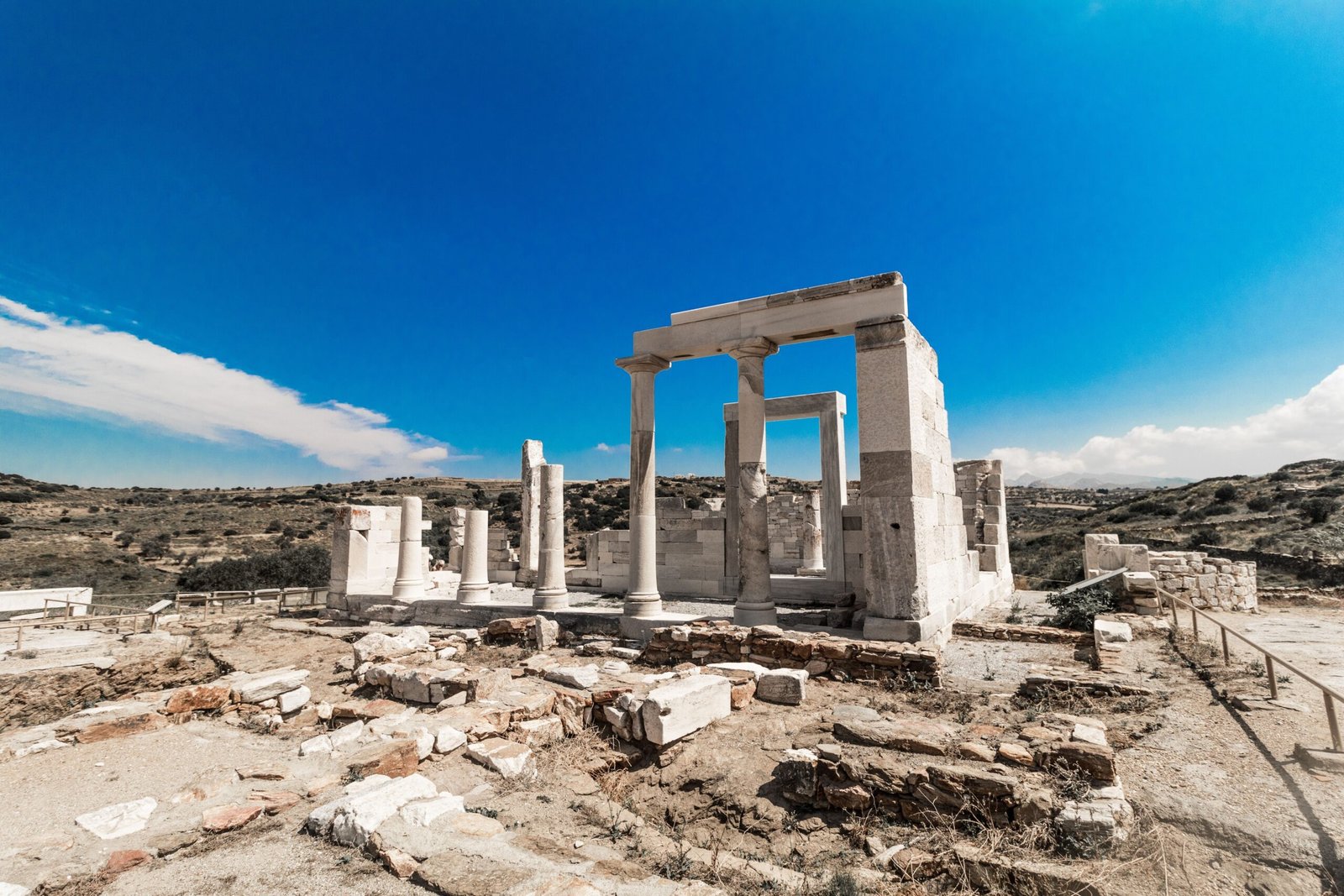The Temple of Demeter, also known as the Temple of Sangri, stands near the village of Sangri on Naxos Island. It remains one of the most important ancient monuments in the Cyclades. Therefore, it attracts history enthusiasts, archaeology lovers, and visitors interested in Greek mythology.
The temple dates to around 530–520 BC, and local rulers commissioned its construction under the tyrant Lygdamis of Naxos. Before that, the site served religious purposes during the late Mycenaean and Geometric periods. Worship focused on Demeter, the goddess of agriculture and fertility, while Persephone may also have played a role in local rituals. In addition, sacrificial practices included offerings of plants and juices rather than full animal sacrifices, reflecting the agricultural nature of the cult.
Architecturally, the temple demonstrates early Ionic style. It features a nearly square floor plan measuring approximately 13.29 by 12.73 meters. The entrance faces south, leading into a pronaos supported by five Ionic columns. Furthermore, the inner chamber, or cella, contains five transverse columns that divide the space. Builders used local Naxian marble for nearly every element, and they incorporated columns and stones from older temples.
During Christian times, around the 5th–6th centuries AD, locals converted the temple into a basilica. Later, the church fell into disuse, yet visitors can still explore the foundation, remaining columns, and sacrificial pits.
The Temple of Demeter lies about 10–15 kilometers from Naxos Town, making access convenient by car. Local buses run to Sangri, and from there, a short walk or local transport reaches the site. The archaeological site opens daily, usually from 08:30 to 15:00, except Tuesdays. Meanwhile, the museum next to the temple charges a small admission fee, whereas outdoor areas remain free for visitors.
Inside the museum, travelers can see architectural fragments, columns, capitals, votive offerings, and later church furnishings. These exhibits explain how the temple evolved over time and provide context for the ruins. Spring and autumn offer the best conditions for visiting because temperatures remain mild. Additionally, mornings and late afternoons provide softer light and fewer visitors.



Comment (0)